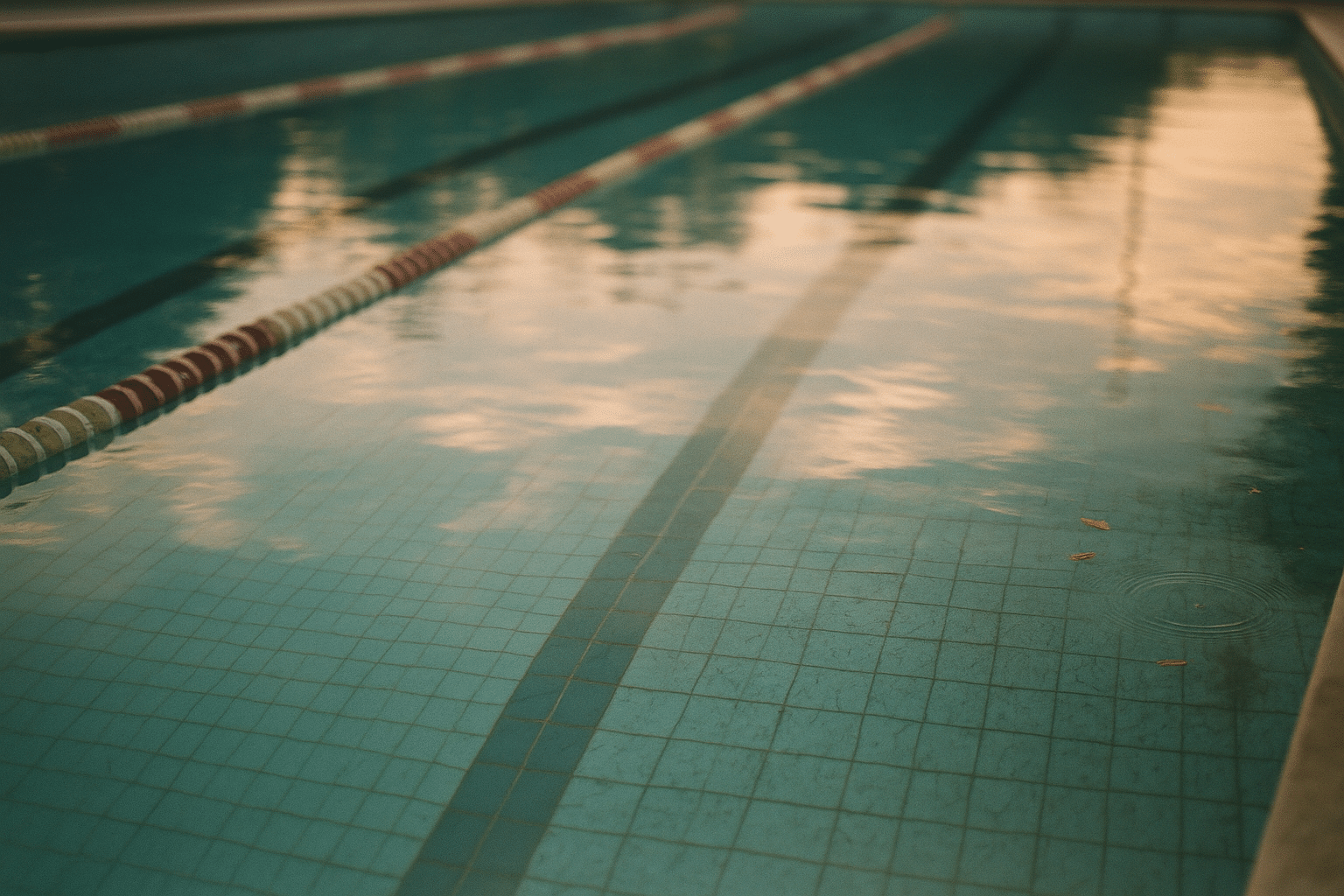
Explore the world of swimming
Outline:
– Introduction: why swimming matters for body, mind, and community
– Techniques and strokes: foundations and common errors
– Training approach: workouts, progression, and safety
– Environments and gear: pools vs open water; equipment basics
– Conclusion: sustainable habit and next steps
Why Swimming Matters: Health, Mind, and Everyday Life
Step into the water and you meet a kinder form of gravity. Buoyancy lifts joints, resistance meets muscles from every direction, and the world goes quiet enough to hear your own breath. Swimming is more than a sport; it is a lifelong skill, a vehicle for health, and a practical form of safety. For many, it starts as play and becomes a habit that adds stamina, balance, and calm to daily life.
From a health perspective, swimming checks multiple boxes at once. It’s a whole‑body, low‑impact workout that challenges the heart and lungs while strengthening the core, back, shoulders, hips, and legs. Because water is roughly 800 times denser than air, each movement engages stabilizers that often remain underused on land. Moderate freestyle can burn a few hundred calories per hour, and vigorous intervals may double that, depending on body size and intensity. Importantly, the water distributes load evenly, making swimming a useful option for people managing joint pain or rebuilding fitness after time away from exercise.
The mental and emotional effects are equally notable. Rhythmic breathing, repetitive strokes, and sensory quiet can function like moving meditation. Many swimmers report improved mood after a session, which aligns with broader evidence that aquatic exercise supports reductions in stress and anxiety. Even short swims—15 to 20 minutes—can provide a mental reset akin to a brisk walk, with the added benefit of cooling the body and improving sleep quality later in the day.
Swimming is also a life skill with clear safety value. Knowing how to float, kick, and orient in water can reduce risk during recreational activities around pools, lakes, and seas. Communities that provide instruction and regular access to water consistently see more confident, safer swimmers. Consider how the skill scales across life stages: children cultivate coordination and confidence; adults gain a joint‑friendly fitness routine; older adults preserve mobility and balance without the jarring impact of land‑based workouts.
Key takeaways include:
– Whole‑body training with reduced joint stress compared with many land sports
– Cardiovascular and muscular endurance built together in a single session
– Calming, meditative rhythm that can improve focus and mood
– Practical safety benefits that carry into everyday life near water
In short, swimming is a versatile, sustainable choice that supports health, well‑being, and personal safety—whether you seek efficient exercise, a soothing pause in a busy week, or confidence around open water.
Strokes and Techniques: How Freestyle, Backstroke, Breaststroke, and Butterfly Compare
Each stroke is a language of movement, tuned to a different rhythm and purpose. Understanding mechanics helps you choose the right stroke for your goals and build efficiency that saves energy while increasing speed.
Freestyle (front crawl) is the workhorse for endurance. Streamlined body position, alternating arm pulls, and a flutter kick drive you forward with continuous propulsion. Breathing to one or both sides, timed with the arm recovery, keeps the neck relaxed and the stroke smooth. Common errors include crossing the centerline with the hand entry, dropping elbows underwater, and kicking from the knees instead of the hips. Small refinements—such as entering the hand in line with the shoulder, maintaining a high‑elbow catch, and exhaling steadily underwater—pay large dividends in speed and comfort.
Backstroke mirrors freestyle mechanics but flips you onto your back. It opens the chest, promotes shoulder mobility, and shifts the breathing demand since your face is above water. The key is maintaining a neutral head position so the hips ride high, minimizing drag. Many swimmers benefit from imagining a straight track overhead and rotating the torso around that axis rather than swaying side to side. A steady flutter kick from the hips stabilizes the body and smooths out rotation.
Breaststroke prioritizes timing and glide over raw turnover. The pull is a heart‑shaped sweep that sets up a streamlined glide; the kick is a powerful whip from heels to together, not a scissor. Because the stroke has a pronounced lift‑and‑glide rhythm, efficiency hinges on minimizing time spent with the head and shoulders high, which increases drag. Keeping elbows in front of the shoulders during the insweep, snapping the kick behind the body line, and shooting forward into a tight streamline can transform the stroke from “stop‑start” to flowing.
Butterfly couples a simultaneous arm pull with a dolphin kick driven from the core. It rewards rhythm over brute force. The torso undulates like a wave; the head lifts only to breathe and then re‑enters the line swiftly. Many swimmers fatigue by pulling too wide or breathing too late. Anchoring the catch early, pressing the chest to initiate the wave, and timing two concise kicks per cycle (one on entry, one on exit) make butterfly more sustainable than it looks.
Comparative notes:
– Freestyle: most economical for distance; strong focus on bilateral breathing and high‑elbow catch
– Backstroke: posture‑friendly and airway‑freeing; emphasizes body rotation and hip‑driven kick
– Breaststroke: technical timing stroke; power comes from a coordinated pull‑kick‑glide
– Butterfly: rhythm‑centric; core‑led undulation with compact, well‑timed kicks
Regardless of stroke, three pillars drive improvement: body position (long and horizontal), propulsion (early, efficient catch), and timing (breath and kick that support, not disrupt, the line). A few minutes of drills each session—such as kicking on your side for alignment, sculling for feel, and short hypoxic sets to refine breathing control—can accelerate skill development without adding stress.
Training Smart: Workouts, Progression, and Safety for Every Level
A thoughtful plan turns occasional laps into meaningful progress. The essentials are simple: start where you are, be consistent, vary intensity and skills, and respect safety. A structured session typically includes a warm‑up, skill or drill work, a main set (endurance, speed, or technique focus), and a cool‑down. This format keeps sessions purposeful and reduces the risk of overuse discomfort.
Sample session ideas by level (adjust distances to time available):
– Newer swimmer: 5–10 minutes easy warm‑up; 6 x 25 relaxed drill/swim (focus on balance and breathing); main set 6 x 50 easy‑moderate with 20–30 seconds rest; cool‑down 4 x 25 very easy
– Intermediate: 10 minutes warm‑up; 8 x 50 drills alternating with steady swim; main set 12 x 100 at a controlled pace with 15–20 seconds rest; finish with 4 x 50 easy technique swim
– Advanced: 15 minutes warm‑up with mixed strokes; main set 3 rounds of 4 x 200 at threshold pace with 30 seconds rest, followed by 8 x 50 strong on short rest; cool‑down 200–400 easy mixed
Progression can be measured by time (swim for 20 minutes, then 25), distance (500 total meters, then 700), or density (shorter rest between repeats). Intervals help regulate effort. For steady aerobic work, use a pace you could maintain for 20–30 minutes while breathing rhythmically. For speed, keep repeats short enough to hold form, allowing adequate rest so each effort is crisp. Drills are the glue: they maintain technique as volume grows, reducing the chance that fatigue engrains poor habits.
Complementary land work supports shoulder health and kick power. Simple routines with scapular stability, rotator cuff activation, hip extension, and ankle mobility set the stage for a smoother stroke. Flexibility around the thoracic spine and ankles often limits efficiency more than raw strength; a few minutes of mobility before and after a swim can free up range of motion that translates directly to speed.
Safety guidelines remain non‑negotiable:
– Choose supervised water when learning or pushing limits; know local rules
– Warm up gradually, especially in cold water, and exit if shivering persists
– In open water, swim with a companion, use a bright tow float, and study currents and wind
– Prioritize visibility; bright caps and clear sighting habits reduce navigational errors
– Respect fatigue; technique breakdown is a cue to slow down or stop
Finally, log sessions—distance, intervals, how you felt, and one technical cue you executed well. This record builds awareness, reveals patterns (like when you swim strongest), and keeps motivation grounded in evidence of progress. Training smart is less about heroic single efforts and more about steady, sustainable steps that feel almost ordinary—until they add up to extraordinary change.
Where and What to Swim With: Pools, Open Water, and Simple Equipment
Your environment shapes your experience. Pools offer predictability: calm water, clear markings, and consistent temperatures. That consistency makes it easier to measure progress and refine technique. Lane ropes dampen chop, tiles provide visual alignment, and turns give frequent breath and rhythm checks. Water temperature commonly ranges from the low to mid‑20s Celsius, with slightly cooler water supporting harder sets and slightly warmer water favoring relaxed technique work.
Open water adds a layer of adventure and skill. Lakes, reservoirs, bays, and coastal areas vary in temperature, clarity, and surface conditions. The freedom is real—no walls, wide horizons—but so are the variables. Sighting becomes an essential skill to maintain a straight line, and adapting stroke rate to chop or currents keeps momentum. Starting conservatively and staying near shorelines or designated swim areas makes transitions from pool to open water smoother.
Basic equipment can enhance comfort without complicating the sport:
– Goggles: Choose a seal shape that fits your face, with lens tints matched to conditions (clear or light for indoors/low light; darker for bright sun)
– Cap: Silicone or latex helps manage hair and improves visibility; bright colors aid open‑water safety
– Suit: Select a comfortable, streamlined cut that allows full shoulder and hip motion
– Fins and paddles: Used sparingly, they build feel and strength; focus on maintaining proper technique when adding tools
– Pull buoy and snorkel: Useful for isolating body position or concentrating on the catch without worrying about timing the breath
Environmental considerations matter. Chlorinated pools rely on precise water chemistry and filtration; occasional dryness of skin and hair can be mitigated by pre‑swim rinses and fresh‑water showers after. In open water, temperature management is critical—colder water demands gradual entry and conservative pacing until you are warm. If local rules allow thermal wear in colder months, understand buoyancy changes and adjust technique and sighting accordingly.
Access influences consistency. Community pools, school facilities, and public beaches often publish lap hours or designated swim zones. Off‑peak times can mean calmer lanes and better focus. Many swimmers thrive with a simple ritual: pack gear the evening before, identify a session plan, and commit to a feasible time window—even 20 to 30 focused minutes can sustain momentum. Ultimately, the most helpful environment is the one you can reach regularly, where you feel safe, and where conditions align with your goals for the day.
Conclusion and Next Steps: Building a Sustainable Swimming Habit
Swimming invites you to grow at your own pace. The water doesn’t judge cadence or speed; it reflects consistency and attention. If you’re starting out, orient your first month around comfort—steady breathing, relaxed kicking, and short sets that leave you wanting a little more. If you’re returning, resist the urge to mimic old numbers on day one; rebuild technique and aerobic base first, and let speed arrive as a by‑product. For seasoned swimmers, sharpening form and varying sets will refresh motivation and performance.
Turn intentions into action with a practical checklist:
– Define a schedule: two to three sessions per week is a reliable foundation
– Assign a purpose to each swim: technique focus, aerobic base, or speed/skills
– Track one metric at a time (distance, pace, or rest) so progress is clear
– Layer in drills every session to protect form as volume increases
– Plan recovery: easy days, gentle mobility work, and adequate fuel and hydration
Consider mixing environments. Use the pool to cement alignment and pacing, and venture into open water periodically to practice sighting, adapt to surface conditions, and enjoy the sense of space. Invite a friend, join a local group, or follow a simple plan—the social element often turns good intentions into a lasting routine.
Above all, keep the experience enjoyable. Notice the satisfying catch on a well‑timed stroke, the calm that follows a quiet exhale, the way daylight patterns ripple across the bottom. These small moments accumulate into a habit that supports health, confidence, and safety for years. Whether your goal is to feel energized during the week, prepare for a community event, or simply move with ease, swimming offers a grounded, adaptable path forward—one length, one breath, one buoyant step at a time.


